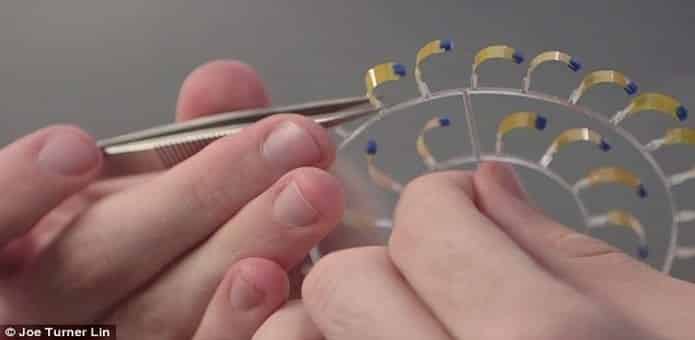For the very first time evaporation driven engines power the movement of a toy car as well as provide electricity to power a LED lamp
Researchers at Columbia University, New York, have revealed a revolutionary technique of “evaporation driven engines” which changes the entire concept of how we can produce power in future. These evaporation driven engines can not only move a toy car but also generate enough electricity which can power a flashing LED lamp.
The research team led by Ozghur Sahin, an associate professor of biological science & physics Columbia University, used the basic fundamental theory of evaporating water to build the innovative evaporation driven engine. Sahin says: “Water wants to evaporate. It has a desire to evaporate. If you make a surface wet, it will dry up, that’s the natural course. What we did was find a way to channel that desire into doing some useful work.”
Sahin had discovered last year that when the bacterial spore from common soil is placed under humid environmental conditions then it absorbs water and swells. When these swollen spores are placed under dry conditions, they tend to release water and shrink. This change in the size of spores can be utilized to push and pull the objects. By using this theory Sahin build the machines.
Sahin also added that the machines which they used were much cheap and could draw energy from water as it undergoes the process of evaporation continuously from surfaces of lakes and oceans.
Sahin’s floating piston engine was made by pasting a line of spores on each side of a thin plastic tape. The spores were arranged in such a manner that the spores on one side overlapped with the gaps between the spores on the other side.
Whenever the tape containing the spores were exposed to humidity, it resulted in swelling of the spores due to absorption of water and this lead to expansion of the tape. On the contrary when the spores are exposed to dry air then the spores shrink and release water leading to contraction of the tapes. This action is similar to that of an artificial muscle which is powered by changing the moisture level. The scientific term for this action is “hygroscopically driven artificial muscles” or HYDRA.
Using this fundamental principle of Hydra, Sahin and his team built a rudimentary piston engine by using dozens of hydra. Next, the hydra was placed inside a plastic case which had little shutters placed overhead. When this engine was placed on water then the evaporating moisture would make the hydra elongate resulting into opening of the overhead shutters. This action further released the moisture to escape from the engine causing the hydra to contract and thus closing the shutters. The entire cycle would keep repeating. During this entire cycle the piston engine is able to generate enough electricity that can power a LED bulb.
Sahin and his team believe this machine can be used in future to power sensors on the sea bottom or even smaller floating lights.
Researchers also built another machine known as moisture mill. In this invention the team used a plastic wheel and covered it with plastic tapes which were covered with spores on one side. Half portion of this wheel is kept in dry air due to which the tapes curl up. The other half portion of this wheel is kept under humid conditions and here the tapes are straightened out because the spores absorb moisture and are well hydrated and in expanded mode. Due to a tiny mass imbalance the wheel starts pushing forward to balance the moisture level.
Sahin and his team used this moisture mill to create their innovative “evaporation driven car”. The wheels of the toy car was attached to the moisture mill and the toy car started to move.
With their unique inventions Sahin and his colleagues have given a new perspective to biology. Sahin says that evaporation can not only save water but it can also generate power.
The innovative technique opens an altogether new aspect for the next generation of renewable devices that can extract energy from natural water evaporation and transform it into something useful for mankind.
The research team have designed electricity generator which rests on water while harnessing evaporation to power an LED as well as move a toy car weighing almost 0.1 kg.
As per the research team their innovation may be utilized to power future robotic systems, sensors, machinery which functions in natural environment.
The entire study and findings of this research has been published in the journal Nature Communications.
Readers can view this video which shows the innovations made by Sahin and his team.
https://www.youtube.com/watch?v=xkyTFIEDHiA

